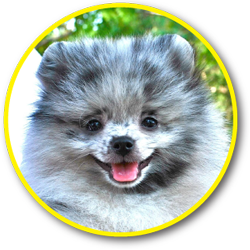Every dog is unique, and that uniqueness goes beyond personality—it extends to grooming needs as well. While all dogs benefit from regular baths, brushing, and nail trims, breed-specific grooming is essential to maintain not only a pet’s appearance but also its health and comfort. Understanding your dog’s specific grooming requirements can prevent skin issues, matting, and unnecessary stress, and it helps ensure your furry friend always looks and feels their best.
Why Breed-Specific Grooming Matters
Different dog breeds have evolved with coats suited to their original environments and purposes. As a result, grooming needs can vary significantly based on coat type, skin sensitivity, and shedding patterns. A one-size-fits-all grooming routine simply won’t work for every dog. Tailoring grooming practices to suit your pet’s breed ensures you’re addressing the needs their coat demands, not just their appearance.
Common Coat Types and Their Needs
Here’s a closer look at some common coat types and the grooming routines they require:
1. Short-Haired Breeds (e.g., Beagles, Boxers, Dobermans)
Short-haired dogs typically require less grooming, but they still shed and benefit from regular brushing to remove dead hair and distribute natural oils. Bathing every few weeks keeps their skin healthy.
2. Double-Coated Breeds (e.g., Huskies, Golden Retrievers, German Shepherds)
These breeds have a dense undercoat beneath a top coat. They shed heavily, especially during seasonal changes. Regular brushing (several times a week) is essential, and deshedding treatments can help reduce hair around the house.
3. Curly-Coated Breeds (e.g., Poodles, Bichon Frises, Portuguese Water Dogs)
Curly coats are prone to matting if not maintained. These dogs require frequent brushing (ideally daily) and professional grooming every 4–6 weeks to keep their curls healthy and manageable.
4. Wire-Haired Breeds (e.g., Terriers, Schnauzers)
Wire-haired dogs have a rough outer coat that can trap dirt and debris. Regular brushing and hand-stripping or clipping are needed to maintain coat texture and prevent matting.
5. Long-Haired Breeds (e.g., Shih Tzus, Afghan Hounds, Collies)
Long-haired dogs need frequent brushing—often daily—to avoid painful tangles and mats. Regular trimming around the eyes, feet, and sanitary areas is also important.
Skin Sensitivities and Other Considerations
Some breeds are more prone to skin issues and allergies. For instance, Bulldogs and Shar-Peis may need their skin folds cleaned frequently to avoid infections. Breeds with droopy ears, like Cocker Spaniels or Basset Hounds, are prone to ear infections and require regular ear cleaning.
Nail care is another area where breed matters. Active breeds that wear down their nails naturally may not need trimming as often, while smaller or older dogs may require more frequent attention.
How Dog Groomers Help
Professional dog groomers are trained to understand the unique needs of various breeds. They know which tools, shampoos, and techniques to use and can spot early signs of skin problems, parasites, or infections. Whether it’s a specific cut for a Poodle or a deshedding treatment for a Husky, groomers provide services that are both aesthetic and functional.
Moreover, regular visits to a groomer help socialize your dog and get them used to being handled—an important factor for long-term comfort and cooperation.
Grooming is about more than just keeping your dog clean—it’s about ensuring their overall well-being. By understanding and addressing breed-specific grooming needs, you’re investing in your pet’s comfort, health, and happiness.
Consult your veterinarian or a trusted groomer to develop a routine tailored to your dog’s breed. With the right care and attention, your pet will not only look their best—they’ll feel their best, too.

